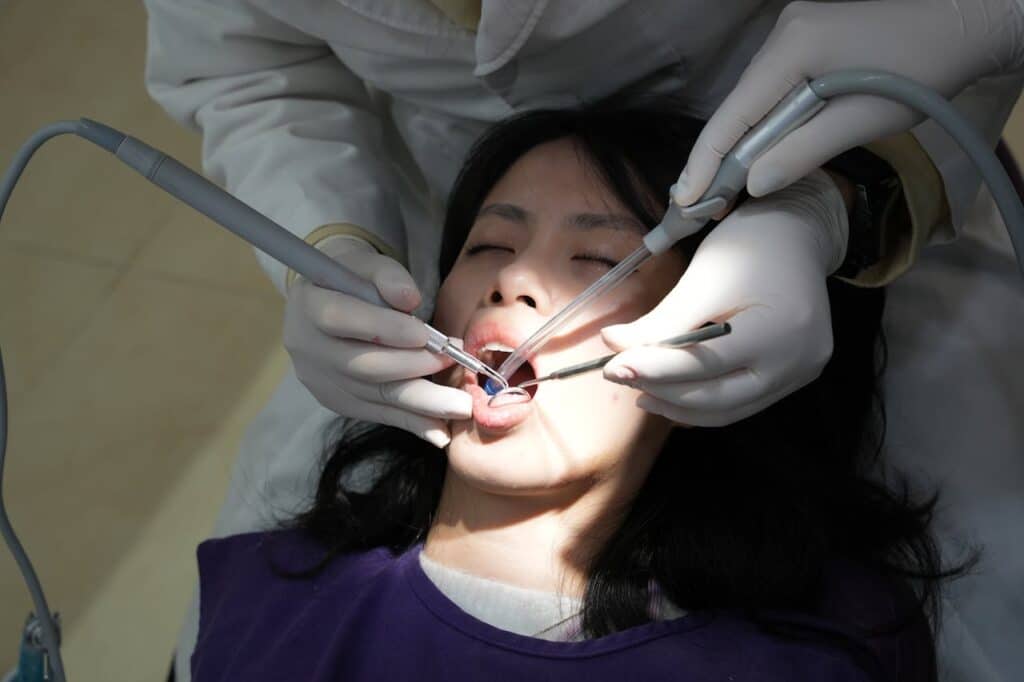Losing a tooth can impact more than your smile. It can also make chewing difficult and affect how you talk. Missing teeth can lead to other dental problems, which is why replacing them is important. Dental bridges offer a practical solution by filling the gap with artificial teeth, restoring not only appearance but also function.
Dental bridges are custom-made to fit comfortably and blend with the natural look of your teeth. They help keep your other teeth in place, maintain your face shape, and improve your ability to bite and chew. For many people, bridges provide a reliable way to get back their confidence and improve oral health.
Choosing to get a dental bridge is a decision that involves understanding the types and benefits. Knowing what happens during the procedure and how to care for your bridges can help you make the best choice for your dental health. This article will guide you through everything you need to know about dental bridges, ensuring you’re well-informed every step of the way.
What Are Dental Bridges?
Dental bridges are devices used to fill gaps left by missing teeth. They consist of artificial teeth, known as pontics, held in place by dental crowns attached to the teeth next to the gap, called abutments. This creates a “bridge” that replaces the missing tooth or teeth.
Different types of dental bridges cater to varied dental needs:
– Traditional Bridges: These are the most common and involve creating a crown for the tooth on either side of the missing tooth, with a pontic in between. Traditional bridges are suitable when natural teeth are present on both sides of the gap.
– Cantilever Bridges: These are used when there is only one natural tooth next to the gap. Cantilever bridges are not as common but can be useful in specific dental situations.
– Maryland Bridges: These involve a metal or porcelain framework bonded to the back of nearby teeth. They are less invasive than traditional bridges, as they do not require crowns on adjacent teeth.
– Implant-Supported Bridges: These use dental implants to hold the bridge in place, offering a strong and stable solution when multiple teeth are missing. This type of bridge doesn’t rely on neighbouring teeth for support.
Each type has unique advantages, and choosing the right bridge depends on your dental structure, preferences, and specific needs. Discussing options with your dentist will help determine the best solution for a natural look and feel.
Benefits of Dental Bridges
Dental bridges offer numerous benefits that go beyond filling the gap of a missing tooth. They help restore both function and appearance, playing a crucial role in maintaining oral health.
Here are some key advantages of dental bridges:
– Restores Function and Appearance: By filling in the gap, bridges help you regain a natural-looking smile. They also ensure that you can chew food properly without difficulty.
– Prevents Teeth Shifting: Missing teeth can cause surrounding teeth to shift out of position, leading to alignment issues. Bridges prevent teeth movement by keeping them in their proper place.
– Maintains Jaw Alignment: Unfilled gaps can lead to an imbalanced bite, causing discomfort or further dental problems. Bridges help maintain jaw alignment and prevent related complications.
– Improves Speech: Missing teeth can impact speech, leading to issues with pronunciation. Dental bridges help improve clarity and your ability to speak naturally.
By addressing issues related to missing teeth, dental bridges contribute to a healthier mouth and boost confidence. They provide a reliable solution for many people looking to maintain a complete and functional set of teeth.
The Dental Bridge Procedure
Getting a dental bridge involves several important steps to ensure a proper fit and lasting solution. First, your dentist will prepare the abutment teeth. This means reshaping these teeth by removing a portion of enamel to accommodate a crown. After preparing the teeth, the dentist takes an impression of your teeth. This model is sent to a dental lab where your bridge, pontic, and crowns are custom-made.
The next stage involves placing a temporary bridge to protect exposed teeth and gums while the permanent bridge is being made. On your next visit, the temporary bridge is replaced with the permanent one. The dentist will carefully check the bridge for proper fit and make adjustments as needed.
What can you expect during this process? Here’s an overview:
– Preparation: The process begins with an initial consultation and preparation of abutment teeth.
– Impressions: Accurate impressions ensure the bridge fits well.
– Temporary Bridge: A temporary bridge protects the area until the final bridge is ready.
– Fitting and Adjustment: On your final visit, the permanent bridge is fitted, adjusted, and then cemented.
The overall timeframe can vary, but typically involves two or three visits over a few weeks. It’s crucial to follow your dentist’s instructions during this process to ensure the longevity and effectiveness of your dental bridge.
Caring for Your Dental Bridges
Proper care for your dental bridge is essential to maintain its condition and your oral health. Daily cleaning keeps it free from plaque and food particles, which can lead to decay or gum issues.
Follow these key steps for bridge maintenance:
– Brush and Floss: Use a soft-bristled toothbrush and floss daily. Special flossing tools or interdental brushes can help clean under the bridge.
– Use Antibacterial Mouthwash: Rinsing with antibacterial mouthwash can help prevent infections and maintain gum health.
– Watch Your Diet: Avoid hard foods that could damage the bridge. Instead, incorporate a balanced diet to support oral health.
Regular dental check-ups are important. They allow your dentist to examine your bridge and surrounding teeth, ensuring there are no developing issues. If you notice anything unusual, like discomfort or change in bite, contact your dentist immediately.
Conclusion
Dental bridges play an important role in restoring oral functionality and aesthetics for those with missing teeth. They provide a reliable means to enhance not only your smile but your capacity to perform day-to-day activities like eating and speaking with ease. Understanding the procedure and benefits, as well as how to maintain your dental bridge, ensures you can enjoy these advantages for years to come.
At Pickering Dental Services, our team is dedicated to helping you achieve a complete and healthy smile with our personalized care approach. Reach out to us today to discuss if dental bridges are the right option for you. Our experts are here to help with any questions and to guide you through the process to ensure the best results.



